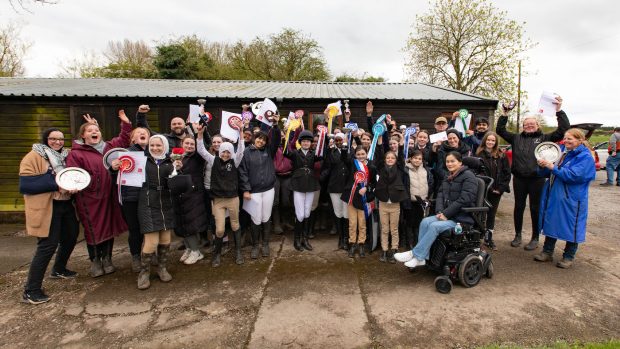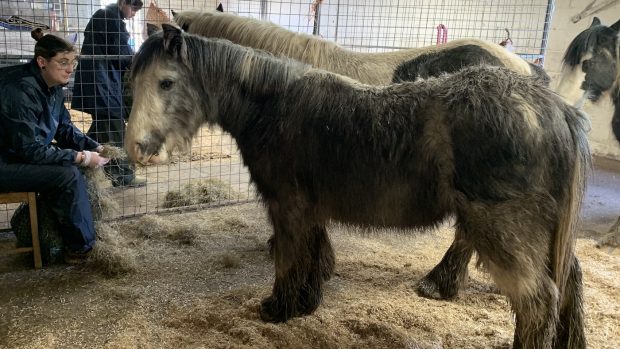“TOGETHER we have the ability to shape the future” is the message from experts, as they asked how we can ensure the sector has, and keeps, a sustainable workforce.
This was a key topic at the National Equine Forum on 3 March, as speakers were asked what the issues are facing the sector’s workforce, and how to combat them.
British Horse Society (BHS) chief executive James Hick, who chaired a panel discussion on the issue, said the equestrian industry is facing a “talent crunch”; an increasing shortage of talent in the sector, at all levels.
He said the BHS ran a recent survey to which 170 employers responded. This found that more than half the vacancies they had advertised in the past year, offering an average salary of £24,000 and crucial to running a successful equestrian business, went unfilled.
A second survey of workers, to which 160 people responded, asked what they looked for in an employer.
“There was a mismatch,” Mr Hick said. “Employers were looking for industry experience, long hours and working weekends and evenings, and it’s hard physical work; the 160 workers were looking for something different. They’re looking for personal development, to be able to control their hours, employment benefits – and often, work-life balance is more important than pay. That’s an important message. And underlying all this is that they’re looking for a good employer.
“Fundamentally, we’re going to have to reconfigure how we work to be able to align requirements, so people will come into the sector.”
Alison Window, owner of Mount Mascal Stables in Kent, said the skills shortage is across the board.
“We can’t get instructors, yard team, grooms or riders,” she said. “The situation as I see it is pretty catastrophic; we have massive concerns about the future of our riding school, and to me, riding schools are the fabric of the sport.
“The workforce makes the business possible; without it, we have no business.”
Ms Window said she has seen people come into the industry who are not “work ready”, qualified on paper but without the necessary skills.
“The demand for riding is there; there’s increased interest, which is great, but without the people to teach them, where do we go?” she said.
Coach Ben Mitchell Winter, manager of Littlebourne EC near London, thanked the BHS for a scholarship that allowed him to achieve his BHS stage four but added that the industry needs to make British riding schools more attractive places to work.
Lucy Katan, executive director of the British Grooms Association and Equestrian Employers Association (EEA), agreed, adding that “every survey we do shows about 40% of people are paid below the minimum wage”, even before increases come in this April.
“The HMRC has identified our sector as one of non-compliance,” she said.
In a recent EEA survey, 71% of employers said they do not think their businesses will cope with this and next year’s increases in the minimum wage. The 6.6% 2022 rise will mean an annual pay rise of £1,380.60 for a groom working 45-hour week.
“85% said they’d have to consider putting up livery fees, and 38% were concerned their businesses would no longer be viable,” Ms Katan said. “Most comments showed real concern about business viability; some said clients don’t fully understand the financial challenges of running an equestrian business.”
Ms Katan said she is concerned there will be an increase in sub-standard employment, and especially false self-employment, adding that many grooms who leave the industry do so owing to their experiences of bad employment.
“We must have good employment for a sustainable workforce,” she said. “There are excellent employers, and I believe they’re increasing but our research shows, again and again, they’re not the norm.”
Ms Katan said service charges have to increase, and yards must become more business-focused, rather than “propped up” by a workforce paid below the legal minimum, or falsely self-employed. She suggested looking at working practices; does every groom need to arrive at 7am every day, or could there be rotas used?
“Could a more flexible approach work, without compromising horse welfare?” she asked. “Do the horses have to be mucked out at 7am, or would round school hours work?
“Maybe it’s time to accept that what we’ve done in the past is not viable. The key to a sustainable workforce is good employment, which can be achieved through good business management.
“Together, we have the ability to shape the future.”
You might also be interested in:

‘It’s no wonder they can’t get staff’: competition groom who worked 70+ hours for £200 says industry has to change

Employers urged to plan ahead for 2022 minimum wage rise

Major fund launched to boost equestrian skills and workforce

Subscribe to Horse & Hound this spring for great savings
Horse & Hound magazine, out every Thursday, is packed with all the latest news and reports, as well as interviews, specials, nostalgia, vet and training advice. Find how you can enjoy the magazine delivered to your door every week, plus options to upgrade your subscription to access our online service that brings you breaking news and reports as well as other benefits.





